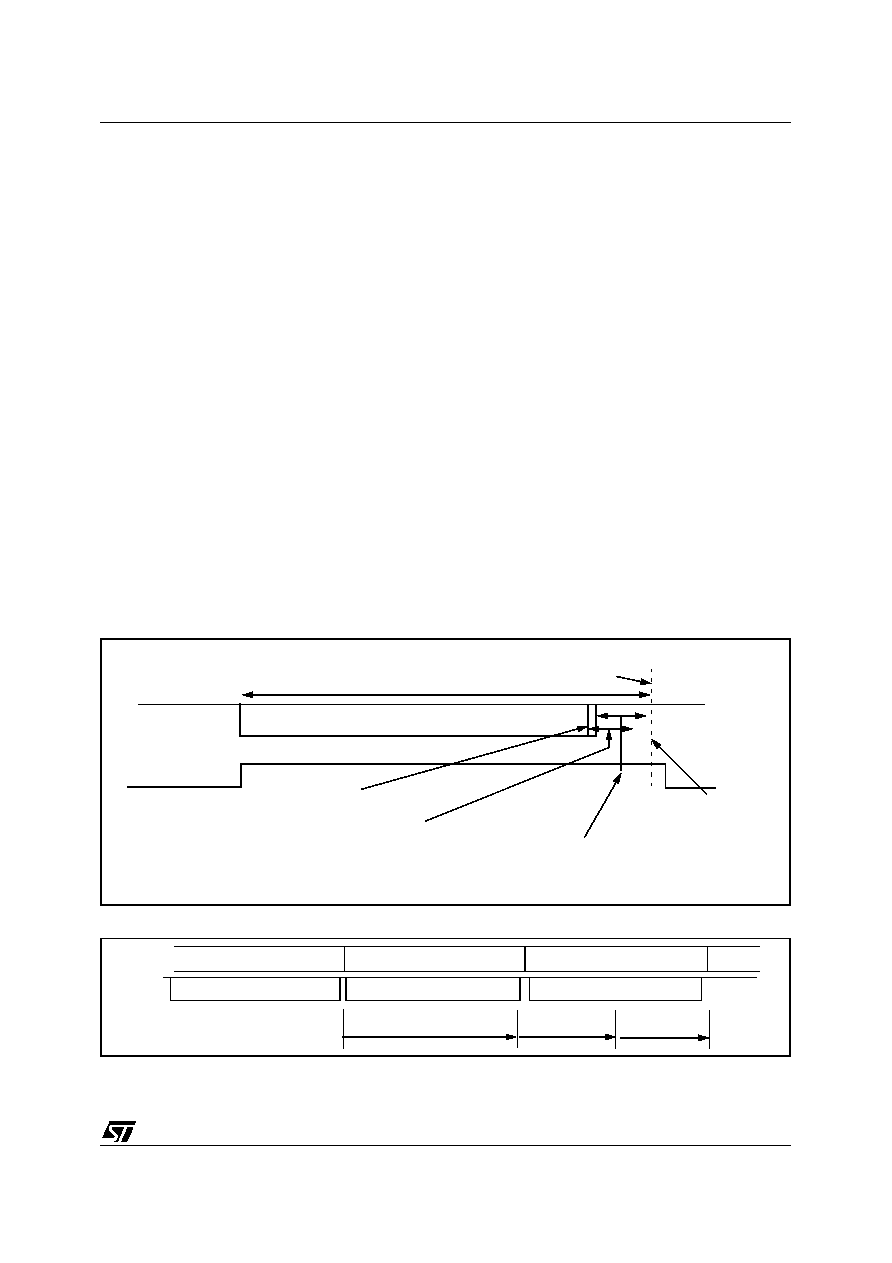- 您现在的位置:买卖IC网 > PDF目录69362 > ST72P561AR6T3/XXX (STMICROELECTRONICS) 8-BIT, MROM, 8 MHz, MICROCONTROLLER, PQFP64 PDF资料下载
参数资料
| 型号: | ST72P561AR6T3/XXX |
| 厂商: | STMICROELECTRONICS |
| 元件分类: | 微控制器/微处理器 |
| 英文描述: | 8-BIT, MROM, 8 MHz, MICROCONTROLLER, PQFP64 |
| 封装: | 10 X 10 MM, LQFP-64 |
| 文件页数: | 100/265页 |
| 文件大小: | 9379K |
| 代理商: | ST72P561AR6T3/XXX |
第1页第2页第3页第4页第5页第6页第7页第8页第9页第10页第11页第12页第13页第14页第15页第16页第17页第18页第19页第20页第21页第22页第23页第24页第25页第26页第27页第28页第29页第30页第31页第32页第33页第34页第35页第36页第37页第38页第39页第40页第41页第42页第43页第44页第45页第46页第47页第48页第49页第50页第51页第52页第53页第54页第55页第56页第57页第58页第59页第60页第61页第62页第63页第64页第65页第66页第67页第68页第69页第70页第71页第72页第73页第74页第75页第76页第77页第78页第79页第80页第81页第82页第83页第84页第85页第86页第87页第88页第89页第90页第91页第92页第93页第94页第95页第96页第97页第98页第99页当前第100页第101页第102页第103页第104页第105页第106页第107页第108页第109页第110页第111页第112页第113页第114页第115页第116页第117页第118页第119页第120页第121页第122页第123页第124页第125页第126页第127页第128页第129页第130页第131页第132页第133页第134页第135页第136页第137页第138页第139页第140页第141页第142页第143页第144页第145页第146页第147页第148页第149页第150页第151页第152页第153页第154页第155页第156页第157页第158页第159页第160页第161页第162页第163页第164页第165页第166页第167页第168页第169页第170页第171页第172页第173页第174页第175页第176页第177页第178页第179页第180页第181页第182页第183页第184页第185页第186页第187页第188页第189页第190页第191页第192页第193页第194页第195页第196页第197页第198页第199页第200页第201页第202页第203页第204页第205页第206页第207页第208页第209页第210页第211页第212页第213页第214页第215页第216页第217页第218页第219页第220页第221页第222页第223页第224页第225页第226页第227页第228页第229页第230页第231页第232页第233页第234页第235页第236页第237页第238页第239页第240页第241页第242页第243页第244页第245页第246页第247页第248页第249页第250页第251页第252页第253页第254页第255页第256页第257页第258页第259页第260页第261页第262页第263页第264页第265页

ST72561
189/265
beCAN CONTROLLER (Cont’d)
In the worst case configuration, if the CAN cell
speed is set to the maximum baud rate, one bit
time is 8 CPU cycle. In this case the minimum time
between the end of the acknowledge and the criti-
cal period is 52 CPU cycles (48 for the 6 bit times
+ 4 for the (PROP SEG + TSeg 1). According to the
previous code timing, we need less than 15 cycles
from the time we see the dominant state to the
time we perform the FIFO release (one full loop +
the actual release) therefore the application will
never release the FIFO at the critical time when
this workaround is implemented.
Timing analysis
- Time spent in the workaround
Inside a CAN frame, the longest period that the Rx
pin stays in recessive state is 5 bits. At the end of
the frame, the time between the acknowledge
dominant bit and the end of reception (signaled by
REC bit status) is 8tCANbit, therefore the maximum
time
spent
in
the
workaround
is:
8tCANbit+tloop+ttest+trelease
in
this
case
or
8tCANbit+25tCPU.
At low speed, this time could represent a long de-
lay for the application, therefore it makes sense to
evaluate how frequently this delay occurs.
In order to reach the critical FMP = 2, the CAN
node needs to receive two messages without serv-
icing them. Then in order to reach the critical win-
dow, the cell has to receive a third one and the ap-
plication has to release the mailbox at the same
time, at the end of the reception.
In the application, messages are not processed
only if either the interrupt are disabled or higher
level interrupts are being serviced.
Therefore if:
tIT higher level + tIT disable + tIT CAN < 2 x tCAN frame
the application will never wait in the workaround
tIT higher level: This the sum of the duration of all the
interrupts with a level strictly higher than the CAN
interrupt level
tIT disable: This is the longest time the application
disables the CAN interrupt (or all interrupts)
tIT CAN: This is the maximum duration between the
beginning of the CAN interrupt and the actual loca-
tion of the workaround
tCAN frame: This is minimum CAN frame duration
Figure 111. Critical Window Timing Diagram
Figure 112. Reception of a Sequence of Frames
A release is not
allowed at this time
Critical window: the received
message is placed in the FIFO
CAN Frame
Acknowledge: last
dominant bit in the frame
Time to test RX pin and to
release the FIFO 4.5s@4 MHz Time between the end of the
acknowledge and the critical windows
- 6 full CAN bit times + time to the sample point
approx. 13s @ 500 Kbaud
0
12
2
tCAN frame 1tCAN frame 2tCAN frame 3
FMP
BUS
CPU
tIT disable
tIT higher level
tIT CAN
相关PDF资料 |
PDF描述 |
|---|---|
| ST72P561J4T3/XXX | 8-BIT, MROM, 8 MHz, MICROCONTROLLER, PQFP44 |
| ST72P561J4T6/XXX | 8-BIT, MROM, 8 MHz, MICROCONTROLLER, PQFP44 |
| ST72P561J7T3/XXX | 8-BIT, MROM, 8 MHz, MICROCONTROLLER, PQFP44 |
| ST72P561J7T6/XXX | 8-BIT, MROM, 8 MHz, MICROCONTROLLER, PQFP44 |
| ST72P561K7T6/XXX | 8-BIT, MROM, 8 MHz, MICROCONTROLLER, PQFP32 |
相关代理商/技术参数 |
参数描述 |
|---|---|
| ST72T101G1B6 | 功能描述:8位微控制器 -MCU OTP EPROM 4K SPI RoHS:否 制造商:Silicon Labs 核心:8051 处理器系列:C8051F39x 数据总线宽度:8 bit 最大时钟频率:50 MHz 程序存储器大小:16 KB 数据 RAM 大小:1 KB 片上 ADC:Yes 工作电源电压:1.8 V to 3.6 V 工作温度范围:- 40 C to + 105 C 封装 / 箱体:QFN-20 安装风格:SMD/SMT |
| ST72T101G1M6 | 功能描述:8位微控制器 -MCU OTP EPROM 4K SPI RoHS:否 制造商:Silicon Labs 核心:8051 处理器系列:C8051F39x 数据总线宽度:8 bit 最大时钟频率:50 MHz 程序存储器大小:16 KB 数据 RAM 大小:1 KB 片上 ADC:Yes 工作电源电压:1.8 V to 3.6 V 工作温度范围:- 40 C to + 105 C 封装 / 箱体:QFN-20 安装风格:SMD/SMT |
| ST72T101G2B6 | 功能描述:8位微控制器 -MCU OTP EPROM 8K SPI RoHS:否 制造商:Silicon Labs 核心:8051 处理器系列:C8051F39x 数据总线宽度:8 bit 最大时钟频率:50 MHz 程序存储器大小:16 KB 数据 RAM 大小:1 KB 片上 ADC:Yes 工作电源电压:1.8 V to 3.6 V 工作温度范围:- 40 C to + 105 C 封装 / 箱体:QFN-20 安装风格:SMD/SMT |
| ST72T101G2M6 | 功能描述:8位微控制器 -MCU RO 511-ST72C104G2M6 RoHS:否 制造商:Silicon Labs 核心:8051 处理器系列:C8051F39x 数据总线宽度:8 bit 最大时钟频率:50 MHz 程序存储器大小:16 KB 数据 RAM 大小:1 KB 片上 ADC:Yes 工作电源电压:1.8 V to 3.6 V 工作温度范围:- 40 C to + 105 C 封装 / 箱体:QFN-20 安装风格:SMD/SMT |
| ST72T121J2B6 | 功能描述:8位微控制器 -MCU OTP EPROM 8K SPI/SCI RoHS:否 制造商:Silicon Labs 核心:8051 处理器系列:C8051F39x 数据总线宽度:8 bit 最大时钟频率:50 MHz 程序存储器大小:16 KB 数据 RAM 大小:1 KB 片上 ADC:Yes 工作电源电压:1.8 V to 3.6 V 工作温度范围:- 40 C to + 105 C 封装 / 箱体:QFN-20 安装风格:SMD/SMT |
发布紧急采购,3分钟左右您将得到回复。